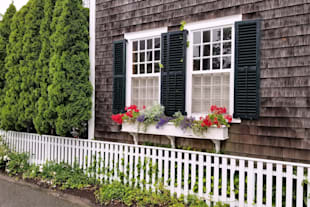Many homeowners with older properties know the frustration of a stuck sash window that simply will not budge. Humidity, layers of paint, or swollen wood can easily trap a window in place, making it difficult to open for fresh air or cleaning. To release a stuck sash window, careful use of thin tools like filling knives or a crowbar, combined with gentle tapping and prying, can often free the window without causing damage.
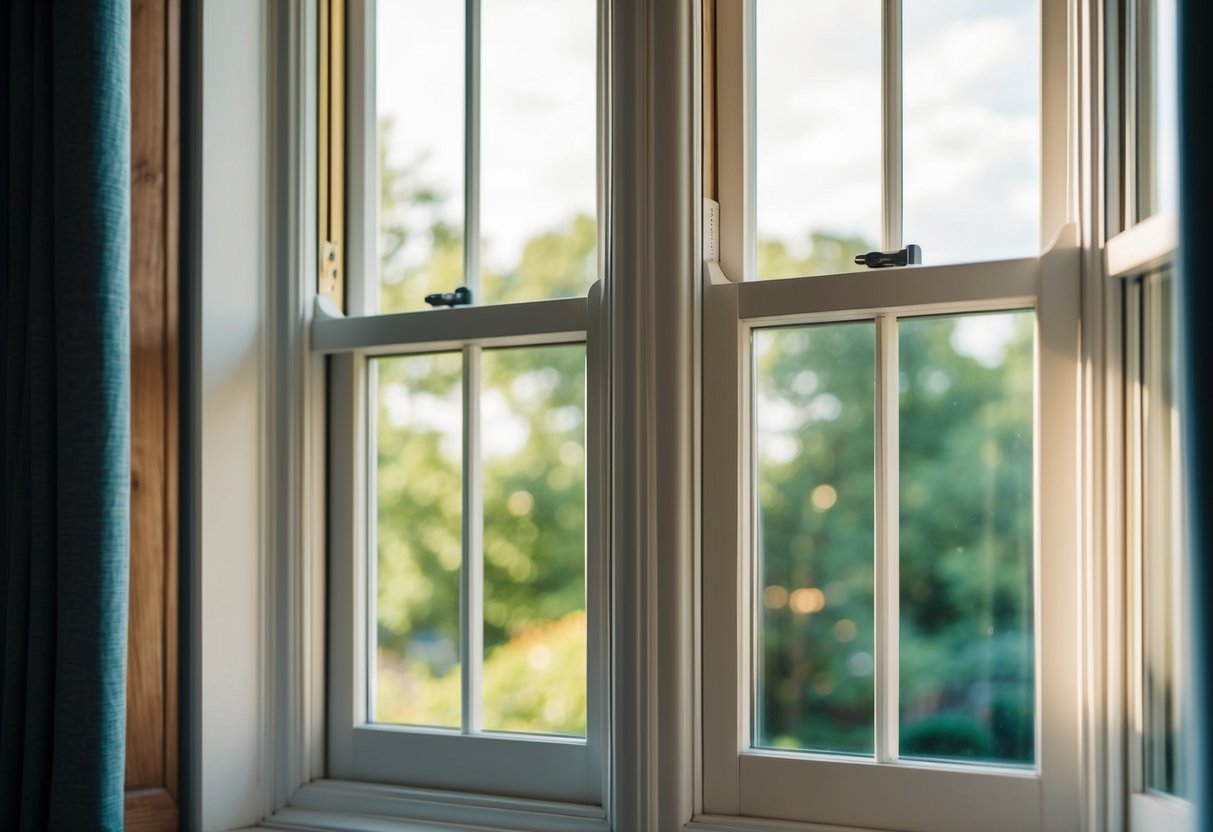
Knowing how to deal with a stuck sash window is important for maintaining both comfort and safety in the home. By taking the right steps, anyone can avoid the need for costly repairs or replacements. This article explains simple, effective methods to get a stck sash window moving again.
Understanding Sash Windows
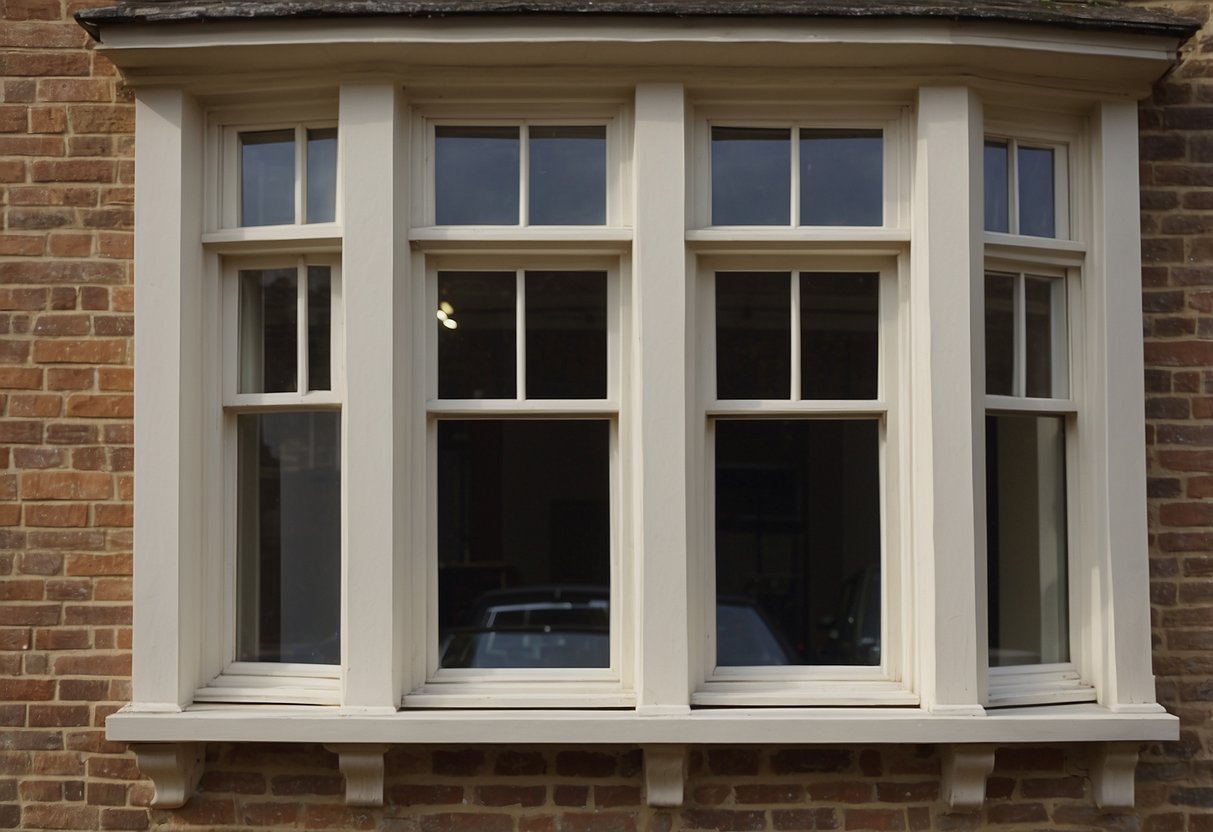
Sash windows have a classic design and remain popular in many homes, especially older properties. Knowing the types and the main parts of a sash window helps when dealing with stuck or jammed sashes.
Types of Sash Windows
There are a few main types of sash windows. The most common is the double-hung window, which has both an upper sash and a lower sash that can move up and down. Some windows only have one moving sash; these are called single-hung sash windows.
Double-hung sash windows make it easy to control ventilation, as either sash can be adjusted. In some designs, the window sashes may tilt inwards for cleaning or maintenance. Less common, but still found in some homes, are horizontal sliding sash windows. Each type works differently, so knowing which one is fitted is important before making repairs.
Traditional sash windows are usually made of timber, though newer types might use uPVC or aluminium. The material can affect how the window operates and whether it is likely to swell or stick.
Components of a Sash Window
A sash window is made from several key parts:
- Upper sash and lower sash: These are the framed panels of glass that slide past each other inside the frame.
- Window frame or sash frame: This surrounds the sashes and is fixed to the wall structure.
- Sash cords and weights: In classic designs, cords run over pulleys and attach to weights hidden inside the frame. These help balance the sashes to allow smooth movement.
- Parting beads: Thin strips that separate the upper and lower sashes to guide their movement and reduce draughts.
- Staff beads: These run along the inside of the frame, holding the sashes in place.
Paint and weather can cause any of these parts to swell, stick, or fail, which is why understanding each component is helpful when fixing a stuck window.
Common Reasons for a Stuck Sash Window
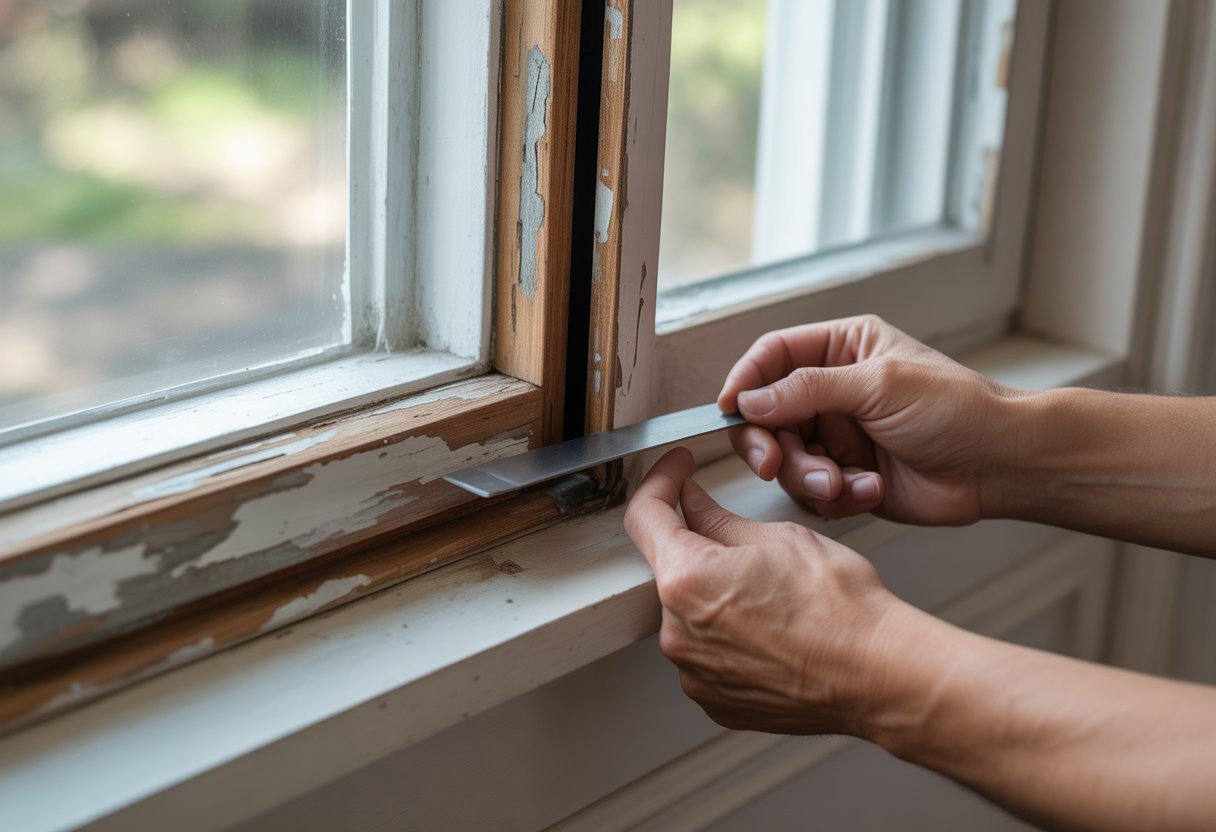
Sash windows often become stuck due to issues with paint, wood movement, or mechanical problems with locks and latches. Understanding these causes can help identify the right solution.
Paint Build-Up
Paint is a common reason for a stuck sash window. When too much paint is applied to the sash or frame, it can glue the wooden parts together. This often happens when windows are painted shut, either on purpose or by accident. Thick or uneven coats of paint make it difficult for the sash to move smoothly.
Paint build-up can form in the tiny gaps between the sash and frame. Over time, this seals the window in place. This problem is more likely if the window has been repainted several times or if paint has dripped into the moving parts. Even a thin layer of paint over the edges can prevent the window from sliding.
To check for paint build-up, look for visible paint in the seams or feel for resistance when trying to lift the sash. Carefully running a utility knife along the edges can sometimes help break the paint seal. Taking precautions can prevent damage to the wood.
Swollen or Warped Wood
Moisture affects wood, causing it to swell or warp and jam the sash window. Swollen wood is common during damp weather or after heavy rain. The window frame or the sash itself may increase in size, which can make it difficult for the window to slide up or down.
Warped wood can bend or twist, creating pressure points in the frame. This often happens in older wooden sash windows that have not been properly sealed or maintained. As the wood dries, it may shrink back, but repeated swelling and shrinking can permanently change its shape.
A stuck sash window caused by swollen or warped wood might need time to dry out, but sometimes the wood must be trimmed or sanded for the sash to fit properly again. Owners should check for soft spots or splits in the frame, as these are signs of water damage or long-term problems.
Faulty Locks and Latches
Locks and latches that are broken or misaligned can also cause a sash window to get stuck. If a lock is jammed or the latch does not sit properly, the window may not budge even when it seems free from paint or wood problems. Old or rusty hardware is a common culprit.
Some sash windows use catches, bolts, or sliding locks to hold the window shut. If any part becomes loose, bends, or snaps out of place, the mechanism might block the sash’s movement. A faulty lock can sometimes be mistaken for a paint or swelling problem.
Inspect the condition of all hardware by checking for rust, bent metal, or missing screws. Trying to force a window open with a broken lock can damage the sash or the glass, so be sure mechanical parts are moving freely before applying pressure. Replacing or repairing the hardware may be necessary if it cannot be fixed.
Essential Tools and Preparation
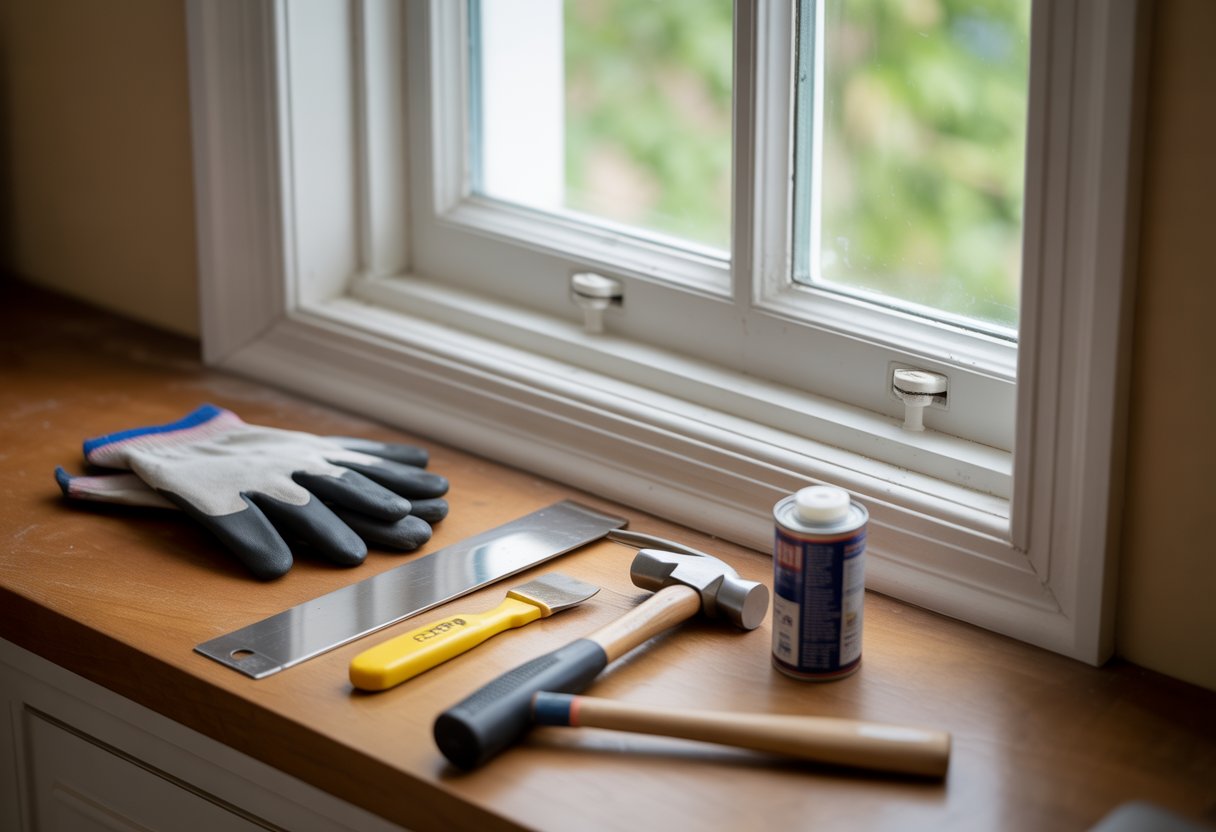
Before starting to free a stuck sash window, being equipped with the right tools and taking time to prepare safely can make the process much smoother. Using appropriate equipment and following safety steps helps avoid both injury and damage to the window.
Selecting the Right Tools
Having the correct tools at hand is essential for releasing a stuck sash window. Common household items such as a utility knife or putty knife are helpful for cutting through layers of paint sealing the sash to the frame. A paint scraper is useful for removing any loose paint or debris along the edges without harming the wood.
A flathead screwdriver allows for prying gently if the sash needs extra encouragement after breaking the paint seal. For stubborn windows, a rubber mallet can help tap the frame, loosening the window without causing damage. A pry bar can be used with care for heavier lifting, but should only be used as a last resort to prevent cracking the wood.
The table below outlines some useful tools:
| Tool | Main Use |
|---|---|
| Putty knife | Cutting through paint edges |
| Utility knife | Scoring paint or caulk seams |
| Paint scraper | Removing loose paint or residue |
| Flathead screwdriver | Gently prying sash or frame |
| Pry bar | Lifting sash if other options fail |
Safety Precautions
Safety is important when working with windows and hand tools. Wearing cut-resistant gloves can protect hands from sharp blades and broken glass. Using eye protection helps prevent injury from flying paint chips or broken wood.
It is important to check for any cracked or broken glass before starting. If there is glass damage, they should address it before working further to avoid cuts. Keeping the area well-lit allows for better visibility, helping avoid accidental slips or prying in the wrong spot.
If using metal tools like a pry bar or screwdriver, always work slowly and with gentle pressure. Excess force can damage the wood or glass. It is also important to keep tools in good condition, ensuring blades are sharp and handles secure, to prevent accidents and achieve more precise results.
Step-by-Step Guide to Releasing a Stuck Sash Window
A stuck sash window can be caused by several issues, including paint build-up, swelling from moisture, or warped components. Identifying the main cause is key to choosing the right tools and method for releasing the window safely and efficiently.
Loosening Painted or Sealed Edges
Paint often seals sash windows shut, especially on older frames. Start by running a sharp utility knife or putty knife along the seam between the sash and the window stops. This will help cut through any paint or varnish holding the window in place.
For stubborn areas, use a paint scraper or a thin blade to gently break the seal. Take care around the glass to avoid cracking it. If resistance is met, lightly tap the handle of the putty knife with a hammer to work it deeper into the seam.
It can help to move slowly along all four sides, cutting and scraping away any build-up. Once the paint seal is broken, try gently pressing or lifting the sash to check if it moves. Avoid using excessive force, as this can damage the frame or sash.
Freeing a Swollen Sash
Wooden sashes can swell due to moisture, especially in humid weather. This makes the window tight in its channel. To ease the fit, try gently tapping the sash rails with a rubber mallet or the heel of your hand. Avoid heavy blows.
Applying a small amount of powdered graphite or silicone spray along the window channel can also help. This acts as a lubricant and helps the sash slide more easily. Always test movement after each step.
If swelling is severe, check for signs of binding along the jamb or stops. Sanding down swollen areas with fine sandpaper can reduce friction, but remove only a little at a time. Wipe away dust before checking the fit again.
Addressing Jammed or Warped Components
A sash may become jammed if the frame or sash itself is warped. Start by inspecting for visible misalignment or gaps between the sash and the window jamb. Use a flat pry bar to carefully apply pressure to the sash corners.
Work slowly and avoid prying against the glass or thin wood sections. If the window is badly jammed, place a wooden block between the pry bar and the frame to distribute the force. This lowers the risk of cracking wood or glass.
In some cases, loosening the screws that hold the window stops or track can relieve pressure. If the sash remains stuck, inspection by a joiner may be needed to assess for permanent warping or damage.
Checking Window Stops and Tracks
Window stops are thin strips that hold the sash in the frame. Over time, these can shift or become clogged with dirt and old paint. Inspect the stops for any excess build-up or signs of tightness against the sash.
Use a putty knife to clean the channel between the sash and the stops. Remove paint flakes, dust, and any debris present. If the wooden stops have swollen or are misaligned, gently pry them back or unscrew them slightly to allow movement.
Inspect the tracks for dents or obstructions. Cleaning and lubricating tracks with silicone spray ensures smooth movement. Make sure all components are re-secured after adjustment to maintain window safety and function.
Preventative Measures and Ongoing Maintenance
Taking steps to keep sash windows in good condition helps prevent them from becoming stuck. Simple, regular care can extend the life of the window and make operation easier year-round.
Regular Cleaning and Inspection
Dirt and debris can collect along the window jamb and in the tracks where the sash slides. Regular cleaning using a soft brush or vacuum helps prevent buildup that causes sticking.
Inspect the sash frame and window frame for signs of paint build-up, rot, or damage. Old or peeling paint can cause the window to stick. Sand away rough patches and touch up paint only as needed.
Checklist for Inspections:
- Check for cracked glass or warped frames.
- Look for gaps around the sash frame.
- Test locks and fittings for smooth operation.
Prompt repairs to damaged parts keep everything moving freely and stop small problems from getting worse.
Controlling Humidity and Moisture
Excess indoor moisture can cause wooden sash windows to swell, making them difficult to open or close. Use a dehumidifier in rooms where condensation forms on or near the window.
Keep window areas dry by wiping up water during rainy periods. Good ventilation is important. Open windows on dry days to let air circulate and reduce trapped moisture.
Check the window frame for leaks or gaps that let water inside. Repair or seal these gaps with appropriate filler or caulk. Protected frames resist swelling and keep sashes moving properly.
Lubrication and Finishing
Apply a suitable lubricant, such as candle wax or a silicone spray, to the window jamb and sliding surfaces of the sash frame. This reduces friction and prevents sticking during movement.
Avoid oil-based products, as they can attract dust and grime. Lubricate the sash tracks once or twice a year, or whenever movement feels rough.
Painted and varnished surfaces should be kept in good condition. Cracked or worn finishes expose wood to moisture, causing swelling and difficulty operating the window. Repaint or refinish as needed, focusing on areas most exposed to weather.

